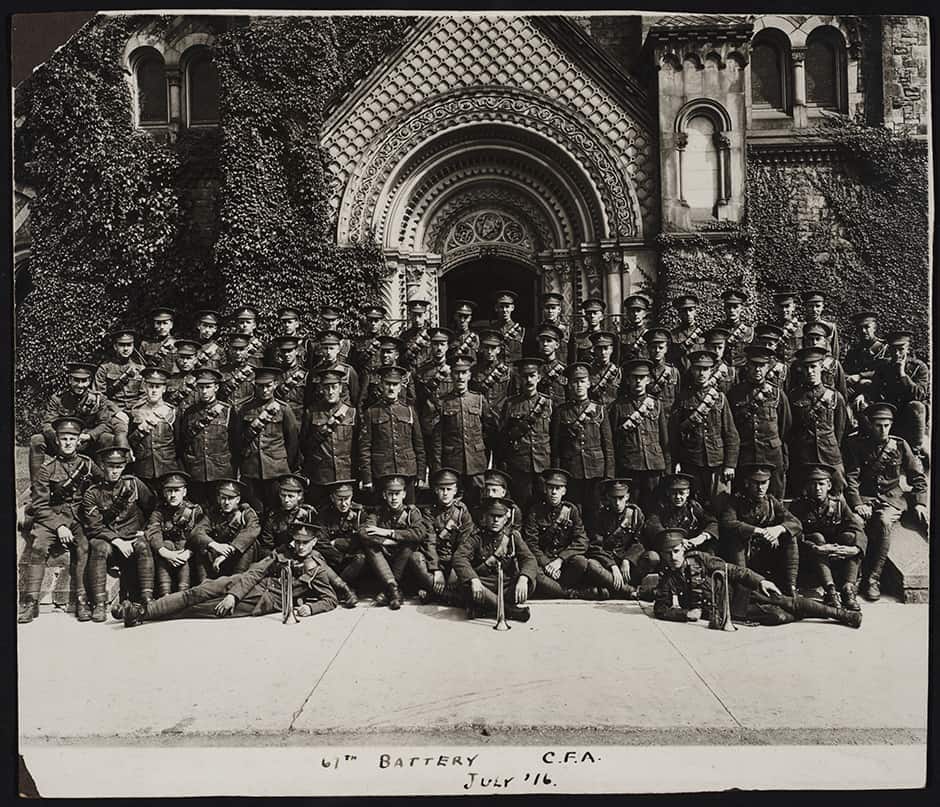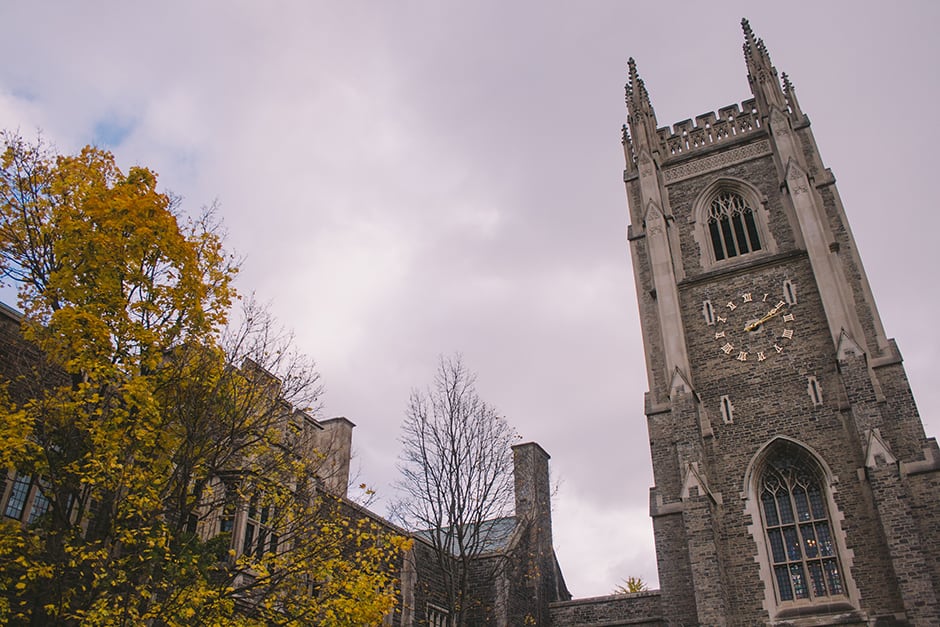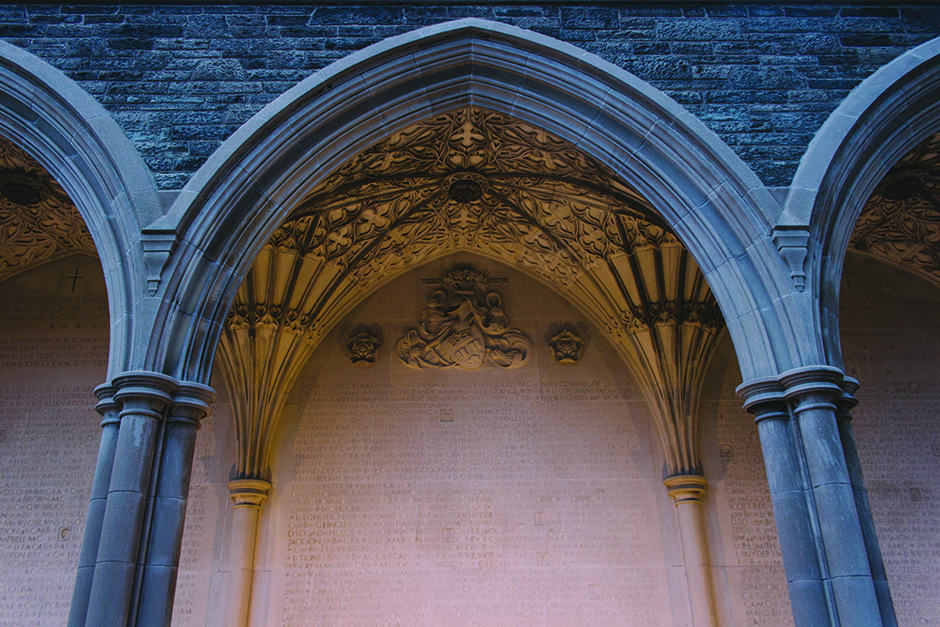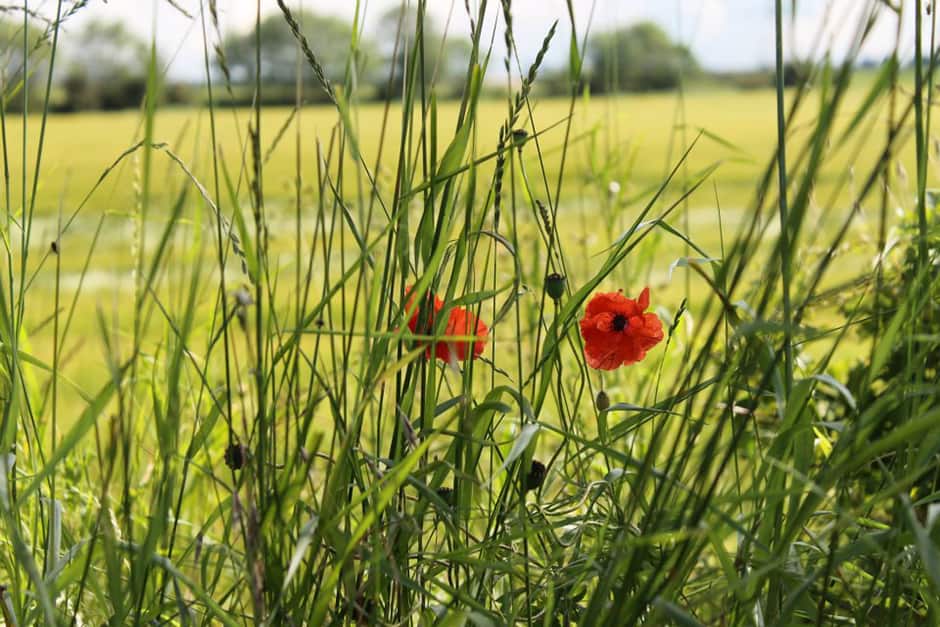[dropcap]T[/dropcap]he artillery shell erupted violently from the mouth of a distant German howitzer with a plume of smoke and a resounding boom as one of the gun’s crew pulled the firing cord.
The machine recoiled with a metallic groan, shifting the earth beneath it and spitting the weighty projectile up into the October sky. Soaring in an arc high above the scarred French terrain, over the sparse deciduous coverage provided by the Somme estuary, the bombshell disappeared from sight in an instant.
It continued to sail for what must have seemed like hours, but was in reality only a few short seconds, before succumbing to gravity and beginning a steep decline, nose down, to deliver its destructive payload. Hurtling towards the earth at hundreds of metres a second, the artillery’s bursting charge was ignited by the fuse, causing the massive bullet to shed its heavy steel jacket in a violent ejection of hot, razor-like shrapnel in all directions.
Standing unawares, directly in the target zone of the shell, were four young company officers of the 73rd Battalion on reconnoitering duty, a few kilometres from the French-Belgian border at a place called Courcelette.
As the shell exploded a few feet overhead, it spit jagged steel on the men with enough force to embed pieces into trees and leave a devastating crater where they stood. The group of Canadians was killed instantly. Far away, the Germans removed their fingers from their ears and began preparing to fire the gun again.
Among the four officers caught in the blast was 25-year-old Lieutenant Paul Lyndon Armstrong. Along with hundreds of other young men killed in action during the Great War, Armstrong had come to France by way of the University of Toronto.
Some were killed in similar explosions, others were caught in chemical gas attacks, and more were collected from no-man’s land, having been pierced by enemy fire while rushing over the tops of trenches.
The view of the battlefields of Europe from above was startling. The once idyllic French terrain had been ravaged by battle. Verdant fields were pockmarked by shellfire; the clear blue skies were blotted out by smoke; the Atlantic breeze bore with it the stinging scent of sulfur. The notion of a beautiful French countryside-playing scene to the soldier’s proposed European adventure had been destroyed in an inferno — one that was quickly burning out of control.
A portrait of a soldier
Armstrong was born on September 17, 1890 in what was then known as Carleton, Ontario. The county would come to be called the Regional Municipality of Ottawa-Carleton in 1969, and later the city of Ottawa in 2001, many years after the smoke had cleared from Europe and another world war had taken place. The city is nestled on the south bank of the Ottawa River, less than 100 kilometres from the American border.
Armstrong enrolled at the University of Toronto to study political science in 1908 at the age of 18, spending four years at University College before graduating in 1912. A newspaper obituary, published upon his death, paints a flattering picture of a boy who was well-liked in his hometown. From the words on the page and the photo in blurry black and white, it is not too difficult to see why the young man was so popular.
There is a handsome symmetry to his features, his dark hair parted neatly in the middle above a set of dark and gentle eyes. He remained exceedingly popular while a student, maintaining a healthy social schedule, which made him friends from Toronto to Montréal.
[pullquote-image] [/pullquote-image]
[/pullquote-image]
Armstrong was a member of an eclectic series of clubs. He was in a fraternity, participated actively in collegiate athletics from tennis to hockey, and was renowned for being a competitive and capable athlete. An early photo from Torontonensis, U of T’s yearbook, shows a sharply dressed Armstrong cradling an impressive tennis trophy. When he graduated from University College, he moved a few streets south to Queen Street to study law at Osgoode Hall. He was called to the bar a few short weeks before he enlisted in 1915.
It might be easy, at first glance, to suggest that Armstrong bares no real similarities to the countless undergraduates who walk the halls and quadrangles of U of T’s three campuses today. Surely, a lot of time and change separates any of us from his experiences. However, that is not to say that modern students do not resemble him and his countrymen of a century ago — or at the very least, cannot find some threads of empathy for his time.
It was in Montréal that Armstrong enlisted in the army in 1915, along with others who were locals in the city. Armstrong was assigned to the fifth regiment of the battalion. He was one of many prospective Canadian soldiers recruited from Montréal and Almonte, Ontario to form the 73rd Battalion of the Canadian Expeditionary Force sent to fight and, tragically, die in France. Armstrong was appointed to the battalion in July of that year but would not be sent overseas until eight months later in March of 1916. His company arrived in August and fought through Belgium around the Ypres salient before being sent to the Somme.
At the time of his death, Armstrong was second-in-command of his company, a group of men who, by all accounts, were as fond of him as everyone else who had ever had the pleasure of meeting him. He was buried at a military cemetery in Albert, a small French commune that traces its historical roots back to an ancient Roman outpost.
A storm of steel
The engagement Armstrong found himself propelled into upon arriving in Europe had been initiated and catalyzed by actors and events that predated his involvement by years. In 1914, most of Europe went about its business completely unaware of the political and diplomatic powder keg resting beneath its feet.
It was a warm day on June 28, 1914 that found Archduke Franz Ferdinand of Austria seated with his wife in the back of an idling Graf & Stift Bois de Boulogne on a Sarajevo side street. The two were recuperating in the open carriage automobile after a failed assassination attempt — a grenade had been lobbed towards the vehicle during a parade moments before.
Gavrilo Principe was one of a group of young extremists belonging to a terrorist cell that had taken to calling itself the Black Hand. He and a number of others had gathered in Sarajevo that day with the express purpose of cutting down Ferdinand, a symbolic figure of the unwelcome imperial presence at the time.
After the earlier attempt on the Archduke’s life by one of his peers had failed, Principe spotted the target of the day’s objective sitting vulnerable in a car in front of him. Without a moment’s hesitation, Principe shot and killed Ferdinand and his wife, unwittingly setting into motion a series of disastrous events.
Within days, the great powers of Europe were at each other’s throats and drafting alliances and battle plans.
Two months later, in August, Canada was pulled into the conflict as a dominion of the now involved Britain. It was up to Canada, however, to determine what form of participation it would take. The day after Britain’s declaration of war on Germany, the Governor General of Canada — Prince Arthur, Duke of Connaught and Strathearn, a member of the British Royal Family — officially submitted a matching declaration on behalf of the dominion.
By this point, the war was already picking up significant momentum. Hostilities had erupted in the months preceding Canada’s introduction to the war in the form of the Austrian invasion of Serbia, with the German Schlieffen Plan already underway.
[pullquote-image] [/pullquote-image]
[/pullquote-image]
Ultimately, Canadians — including U of T students like Armstrong — would march into battle over the next four years, earning their stripes and building a reputation for their country at battles like the Somme, Vimy Ridge, and Passchendaele. They came from places with names like Guelph, Ontario — as in the case of Lieutenant Colonel John McCrae, a surgeon and poet — or Napanee, Halifax, and St. John’s. Their bodies were collected where they fell across Europe.
The motivations of Armstrong, McCrae, and the thousands of other Canadians who signed their names to support their country are difficult to appreciate in their totality. Some were surely driven by a deep sense of patriotic duty. Ties to their European forebears must have compelled some to stand with England. A number born in Canada would have been eager to join to prove the country’s mettle in its nascence.
But surely others were called to action at the prospect of adventure. The romance of it all is easily understood; the promise of glory set against the beautiful landscapes of Europe to combat the forces of evil danced in the minds of young men, untempered by the insights that would be provided by today’s media. Sparse communication from the lines would not, and could not, capture the brutality they were to face — the mud, the trenches, the gas.
When conscription came into effect late in the war, in January of 1918, the visions of glory had been crushed by letters and death notifications sent from the battlefields of Europe to anxious families at home. None were enticed by the possibilities of death, or loss, and yet it is what so many received.
The tower
Besides his headstone in Albert, Somme and the war memorial housed in Osgoode’s Great Library, Armstrong’s name can be found etched on the top right corner of the World War I memorial wall at Soldiers’ Tower on the St. George campus.
[pullquote-image]

Soldiers Tower. JENNIFER SU/THE VARSITY
[/pullquote-image]
Every day, thousands of students pass his name — and those of 628 other members of the U of T community who gave their lives — as they walk across campus and under the grand archway of the monolithic tower. They walk, largely undisturbed — save for the passing concerns of due dates and exams — and mostly ambivalent to the magnitude of events that prompted the tower’s construction in the first place.
The university as it stands today is difficult to contextualize as an area for war. The firing range in Hart House has long been abandoned and there are no drills taking place on the newly turfed Back Campus. But, 100 years ago, every day for four years, students and staff milling about campus could not hope to avoid the presence of conflict; the war had come to them and, soon, many would step forward to meet it.
Hart House, which adjoins the Soldiers’ Tower, appeared strikingly different in the time that Armstrong and thousands of others used the university’s grounds to prepare for war. The structure itself was under construction throughout the period stretching from 1914-1918, though its incompletion did not stop the university from using it to train soldiers. It is fitting, then, that once the war had ended, its emblematic memorial would be built so close to the area where much of the university’s contribution to the war effort took place.
[pullquote-image] [/pullquote-image]
[/pullquote-image]
In a piece titled “Changed by War” in U of T Magazine, published earlier this year, Alice Taylor describes the extent to which Hart House was made available to the burgeoning Canadian forces in the early days of conflict: “Recruits marched in the Great Hall, the Royal Flying Corps set up workshops in the gymnasium, and the Military Hospitals Commission Command trained medical personnel, including women nurses and rehabilitation specialists, in what are now the Debates and Music Rooms,” she writes.
It is difficult to imagine having your walk between lectures or your midday coffee run interrupted by the sudden cracking of musket fire in shooting drills. There is something both playful and naïve about pre-war accounts of training on the university’s grounds. Images of students rushing to bayonet sand bags or navigating artificial terrain designed to resemble blown-out French and Belgian towns carry a sense of frivolity. Campus today does not lend itself well to large sustained military exercises — nor to imagining that these activities were once commonplace.
On a Friday in late January of 1921, the Memorial Committee of the University of Toronto’s Alumni Association delivered a letter to the university’s administration to request the requisite funds to finish construction on a memorial for the university’s war dead.
[pullquote-image] [/pullquote-image]
[/pullquote-image]
The alumni were able to raise $397,141 towards a stone clock and bell tower in the Gothic Revival style.
Canada’s then Governor General Victor Cavendish ninth Duke of Devonshire, laid the tower’s cornerstone in 1919, one year after the final shots of the war. The tower contains a Memorial Room that houses a collection of U of T’s war memorabilia. Patinated medals, tattered flags, and dog-eared historical volumes sit safely under glass alongside original photographs and letters.
100 years later
In the century since World War I ended, much has changed. Though time does not erase the sacrifices of Armstrong and the countless other Canadians who gave their lives in the Great War, it does blur their memories. It is easy for students to pass beneath Soldiers’ Tower and by the tribute wall without thinking of the individuals that the etched characters commemorate.
It is not that students don’t remember; they couldn’t possibly be asked to. It is not that they don’t attend memorial services. Rather, perhaps they don’t appreciate that the war years, now a fixture in history textbooks, are not so long ago, and that the lives of young soldiers were not so different from their own.
[pullquote-image] [/pullquote-image]
[/pullquote-image]
Each year, for a few fleeting days at the start of November, red flowers make appearances on the coats of students, staff, and faculty crossing campus. For a moment on November 11 at 11:00 am, many will pause in silence, perhaps to think about a time when campus wasn’t so peaceful in the shroud of late fall, and when youth was inextricably tinged with the uncertainty of war.
These symbols — the tower, the wreaths, the recitations of McCrae’s powerful verse — represent our collective history. They preserve the memories of those who gave their lives and implore us to learn — to notice the individual names etched on the tower, and discover the stories behind them.


